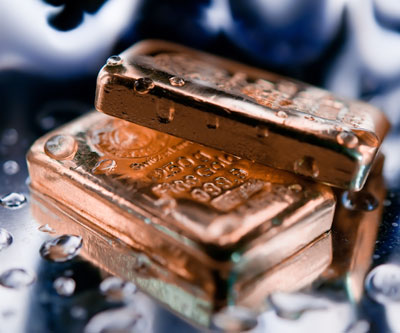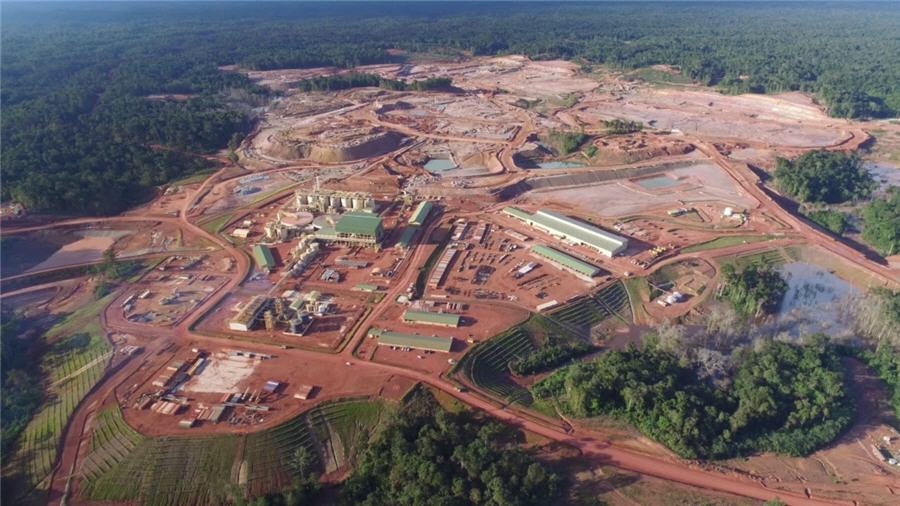Asian axis of India and China continues to advance gold demand

Gold’s strong start to the year was reinforced during the second quarter of 2011 where total global gold demand measured 919.8 tonnes (t), worth a near-record US$44.5bn, with broad-based support across all sectors and geographies. Standout markets were India and China, as these two markets accounted for 52% of total bar and coin investment and 55% of global jewellery demand, the World Gold Council announced today.
According to the Gold Demand Trends report for Q2 2011, gold demand in the second half of 2011 will remain strong owing to a number of key factors:
- Despite a higher gold price, Indian and Chinese demand grew 38% and 25% respectively during Q2 2011 compared to the same period of 2010. This growth is likely to continue, due to increasing levels of economic prosperity, high levels of inflation and forthcoming key gold purchasing festivals.
- The impact of the European sovereign debt crisis, the downgrading of US debt, inflationary pressures and the still-fragile outlook for economic growth in the West are all likely to drive high levels of investment demand for the foreseeable future.
- Central banks are likely to remain net purchasers of gold. Purchases of 69.4t during Q2 2011 demonstrated that central banks are continuing to turn to gold to diversify their reserves.
Marcus Grubb, Managing Director, Investment at the World Gold Council commented:
“The strength of demand in India and China, coupled with an overall drop in recycling activity this quarter, demonstrates that consumers have adjusted to the current price environment and expect the upward price trend to continue. In addition, ongoing macro economic uncertainty, the continued sovereign debt crisis and widespread inflationary pressures, will result in gold demand remaining strong.”
Gold Demand Statistics for Q2 2011:
- Global gold demand in the second quarter of 2011 totalled 919.8t, down 17% from the remarkably strong levels of 1,107t in the second quarter of 2010. Gold demand in value terms grew by 5% year-on-year reaching US$44.5bn up from US$42.6bn in the second quarter of 2010. This is the second highest quarterly value on record, only fractionally below the US$44.7bn record that occurred in the fourth quarter in 2010.
- The quarterly average gold price rose by 26%, reaching a record high of US$1,506.13 (as per the London PM fix).
- Second quarter 2011 global investment demand was 359.4t, 37% down year-on-year from 574.2t in the second quarter in 2010, which was the second highest quarter ever.
- ETFs witnessed solid net inflows of almost 51.7t during the second quarter of 2011, which compared well to the previous 12 quarters (excluding two record peaks) where ETF inflows have averaged 41.4t.
- Demand for gold bars and coins totalled 307.7t during the second quarter of 2011, a gain of 9% over year-earlier levels of 282.6t. In value terms, bar and coin demand was worth US$14.9bn, an increase of 37% from US$10.9bn in the second quarter of 2010.
- Jewellery demand in the second quarter of 2011 was 442.5t, 6% higher than the year-earlier levels of 416.7t. In value terms, this represented a 34% increase to US$21.4bn from US$16.0bn in the same quarter last year. India, China and Turkey together accounted for 59% of global jewellery demand at 260.1t in the second quarter of 2011 and registered a combined growth of 36.1t on year- earlier levels.
- Technology demand was up by 2% at 117.9t from 116.1t in the second quarter of 2010, generated by an increase in demand from the electronics segment. In value terms this was a quarterly record of US$5.7bn, up 28% from the next highest in Q4 2010 of US$4.5bn.
- Gold supply was 1,058.7t in the second quarter of 2011, which was a 4% decline from 1,108.3t in the same period in 2010, as a result of an increase in net purchasing by central banks. Mine production rose by 7% to 708.8t from year-earlier levels of 659.4t in 2010.
- Central banks’ purchases this quarter more than quadrupled compared to the levels of the second quarter in 2010.
- Recycling activity stood at 429.3t, 3% down year-on-year from 444.3t in the second quarter of 2010.
A copy of the Q2 2011 Gold Demand Trends report, which includes comprehensive data, can be viewed at:www.gold.org/investment/research/regular_reports/gold_demand_trends/.
For further information please contact:
Stephanie Mackrell
World Gold Council
T +44 20 7826 4763
E Stephanie.mackrell@gold.org
Quintin Keanie
Capital MSL
T+44 20 7255 5154
E Quintin.Keanie@capitalmsl.com
More News
{{ commodity.name }}
{{ post.title }}
{{ post.date }}

Comments